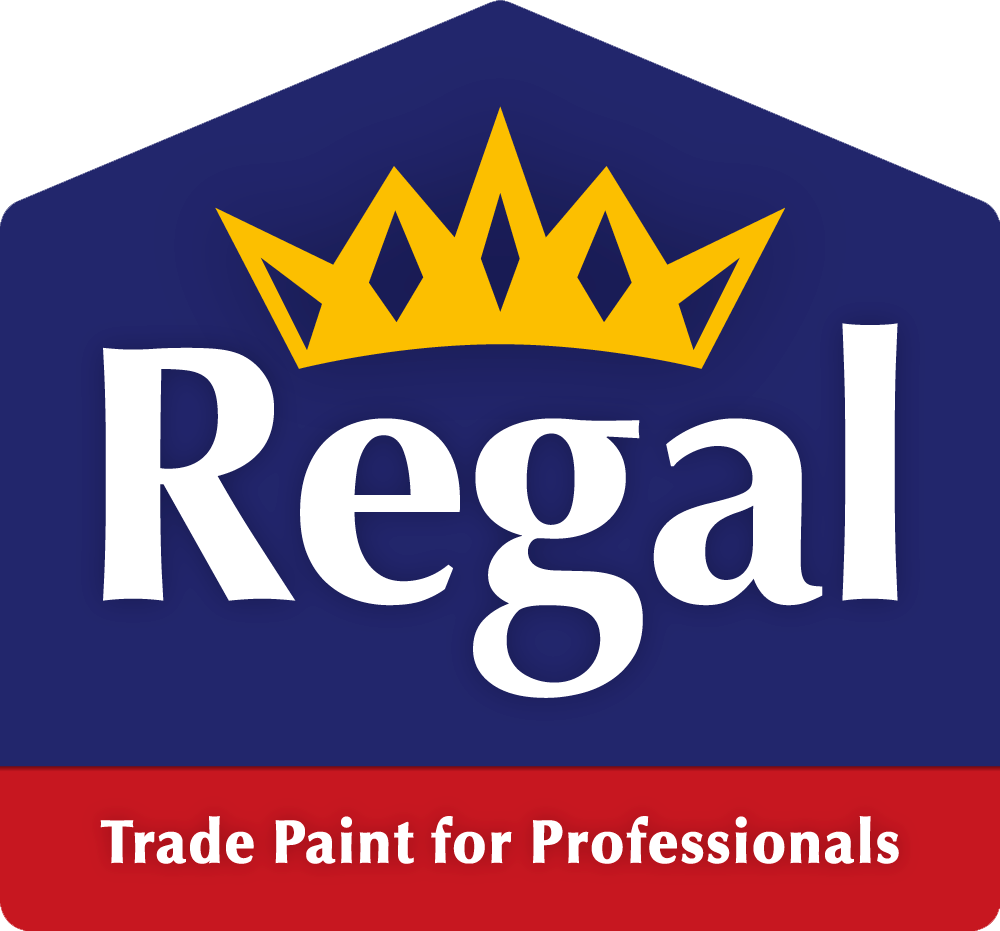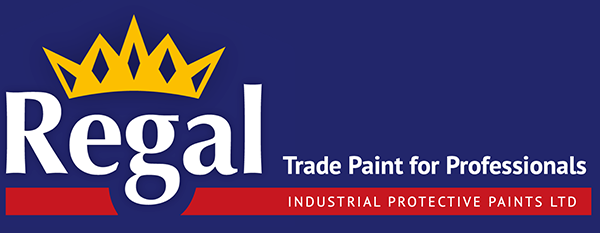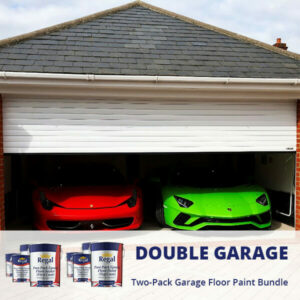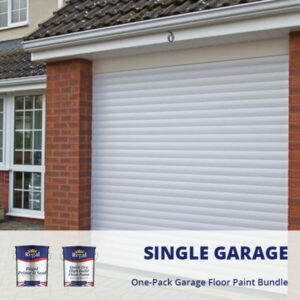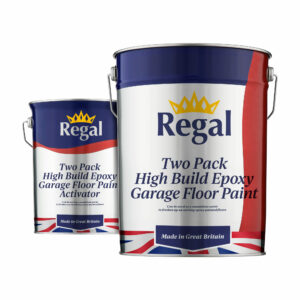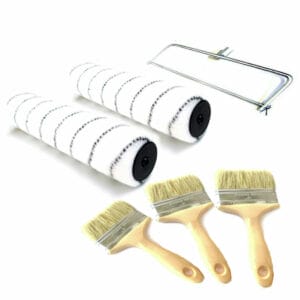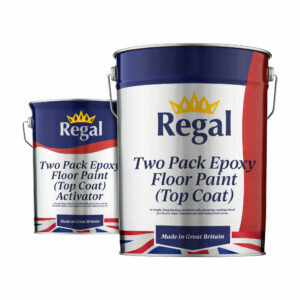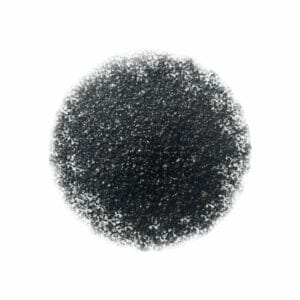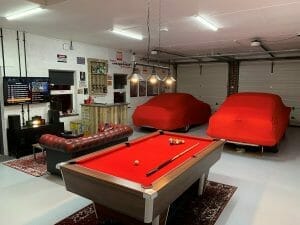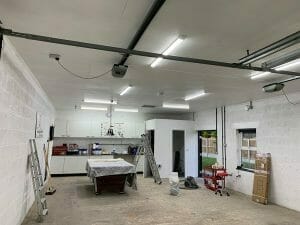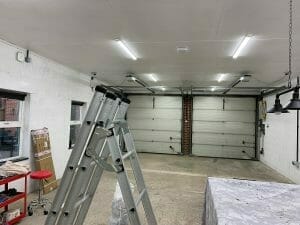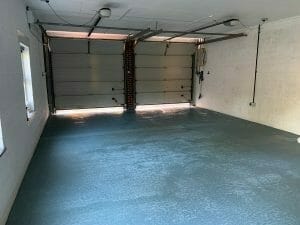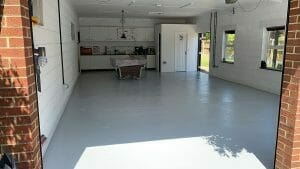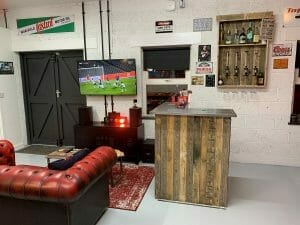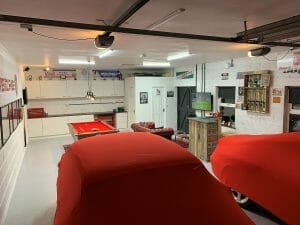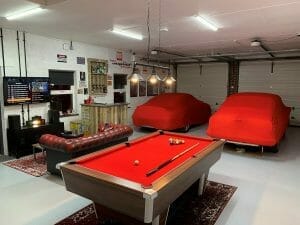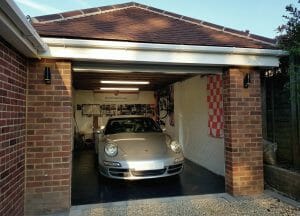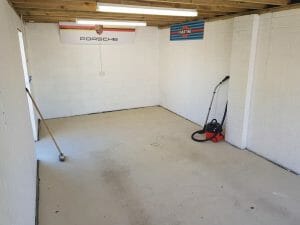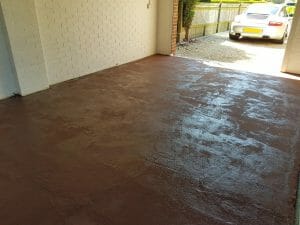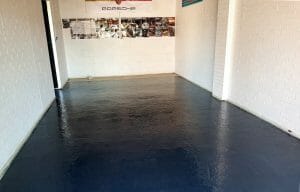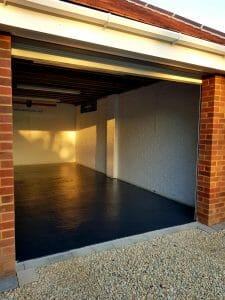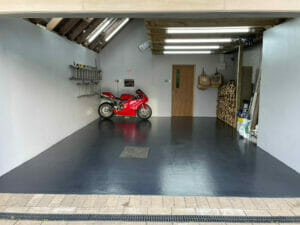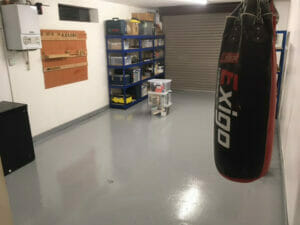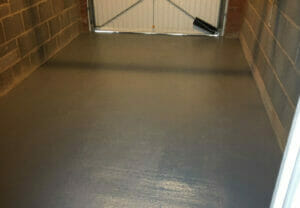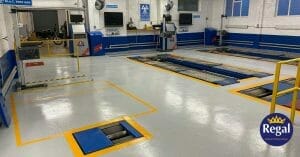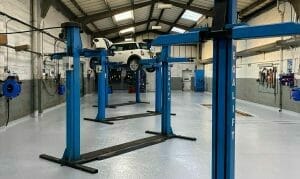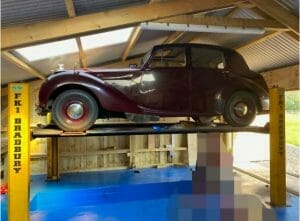Best Garage Floor Paints
Are you trying to find to find the best paint for garage floors? Or how many litres you need to paint a a garage floor? Are you looking to paint a single garage or double garage?
Please browse below to look at all of our suitable products. All of the topcoat floor paints are available in a range of colours.
We have also created discounted bundles, to help keep the cost down.
Do you need help choosing a product?
If you can’t find what you are looking for or if you need some help in deciding which product to use, please don’t hesitate to call us on 01782 550733 or email at sales@regalpaints.co.uk. We make all of our paint in our factory and so we are in the best position to advise you. And we really don’t mind giving as much technical help as you need.
Double Garage Two Pack Garage Floor Paint Bundle - This epoxy floor paint bundle is designed for application to concrete garage floors and provides enough paint to coat a standard double garage floor (see diagram for dimensions). This bundle consists of: 2 x 5 Lts Two pack Epoxy Floor Sealer 2 x 5 Lts Two Pack Epoxy Floor Paint Topcoat (Select Colour)
Our Double Garage Floor Paint Bundle is fast and effective way to paint a standard double garage floor (see diagram for dimensions). Simply prepare the concrete floor with Regal Prime and Seal and then coat to with a single pack quick dry floor coating in a colour of your choice! Our quick drying high build floor paint provides good durability against abrasion and impact along with with protection against solvent, salt and water damage. Our Double Garage Floor Paint Bundle consists of: 2 x 5 Lts Regal Prime and Seal 2 x 5 Lts Quick Dry High Build Floor Paint (Select Colour)
Single Garage Epoxy Floor Paint Bundle - This garage floor epoxy bundle has been designed for easy application to concrete garage floors and provides sufficient first coat and top coat epoxy paint to coat a standard single garage floor with a beautiful, hard-wearing finish (see diagram for dimensions). This bundle consists of: 1 x 5 Lts Two Pack Epoxy Sealer 1 x 5 Lts Two Pack Epoxy Floor Paint Topcoat (Select Colour)
Single Garage Floor Paint Bundle – This garage floor paint pack provides a quick and easy way to paint a standard single garage floor (see diagram for dimensions). Firstly, prepare the concrete floor with Regal Prime and Seal and then paint with a single pack quick dry high build floor paint for fantastic results. This top coat paint provides good durability against abrasion and impact along with with protection against solvent, salt and water damage. Our Single Garage Floor Paint Bundle consists of: 1 x 5 Lts Regal Prime and Seal 1 x 5 Lts Quick Dry High Build Floor Paint (Select Colour)
Anti Slip Quick Dry Concrete Floor Paint is a made with the addition of a wax additive to give more slip resistance to your floor. This is a single pack paint (does not need an activator) and gives protection against solvent, salt and water damage. Having good durability and impact resistance, it is suitable for use in heavy duty commercial and industrial areas. – Coverage: 5-10 m² per litre – Touch Drying Time: 3-6 hours – Recoat: 24 hours – Hard Drying Time: 48 hours
Two Pack High Build Epoxy Garage Floor Paint - Designed for application to concrete, cement and non ferrous metals. Excellent resistance to water, solvents, acids, alkalis and salts. Gives superb adhesion to all recommended substrates. Tough finish has long lasting abrasion and impact resistance. Recommended for areas receiving heavy traffic (vehicle / trucks). - Coverage: 5-7 m² per litre - Touch Drying Time: 12-16 hrs - Recoat: 24 hrs - Hard Drying Time: 48 hrs - Full Cure: 7 days
Painting Essentials Sundries Pack - ideal for applying both single pack garage floor paint and two-pack epoxy floor paint. 3 x 4" brushes 1 x 15" roller frame 2 x 15" roller heads
Polyurethane Concrete Floor Paint - A single pack high build floor coating giving medium durability against abrasion and impact, with limited protection against solvent, salt and water damage. Polyurethane Concrete Floor Paint is easy to apply with a gloss or semi-gloss finish. Suitable for light commercial and industrial areas.
This is a fast drying garage floor paint. A single pack, one-part paint which is easy to apply. Suitable for medium to heavy traffic areas, commercial and industrial use. Gives good protection against solvent, salt and water damage. UK made in our factory to give you one of the best garage floor paints. Available in a range of popular colours, grey garage floor paint being the bestselling colour. If you are looking to paint concrete which is bare or if you are repainting a concrete floor, we would recommend the use of Regal Prime and Seal which is our garage floor sealer, designed to coat the bare concrete or spot-prime worn areas.
Quick Dry High Build Floor Paint - A single pack quick dry floor coating which provides good durability against abrasion and impact along with with protection against solvent, salt and water damage. Very easy to apply. Suitable for heavy duty commercial and industrial areas.
Two Pack Epoxy Floor Paint (Top Coat) - This epoxy floor coating is designed for application to concrete, cement and non ferrous metals. It provides excellent resistance to water, solvents, acids, alkalis and salts and gives superb adhesion to all recommended substrates. Tough finish has long lasting abrasion and impact resistance. Recommended for areas receiving heavy traffic (vehicle/trucks). Following application of the product: Do not park vehicles or place heavy equipment on the floor for a minimum of 48 hours Do not get the floor wet for a minimum of 7 days as this will cause bloom (discolouration) - Coverage: 5-7 m² per litre - Touch Drying Time: 12-16 hrs - Recoat: 24 hrs - Hard Drying Time:48 hrs - Full Cure: 7 days
Two-Pack Epoxy Floor Sealer (Under Coat) - This epoxy floor paint (first coat) is designed to prepare the surface of concrete, cement and non ferrous metals. This gives an ideal base for epoxy topcoat or acts as a seal coat for bare concrete floors. Resistant to water, solvents, acids, alkalis and salts. Tough finish, and has long lasting abrasion and impact resistance. Recommended for areas receiving heavy traffic (vehicle/trucks). Following application of the product: Do not park vehicles or place heavy equipment on the floor for a minimum of 48 hours Do not get the floor wet for a minimum of 7 days as this will cause bloom (discolouration) - Coverage: 5-7 m² per litre - Touch Drying Time: 12-16 hrs - Recoat: 24 hrs - Hard Drying Time: 48 hrs - Full Cure: 7 days
Floor Primer made to use in conjunction with any of the Regal single pack topcoat floor paints. Not suitable for use with our epoxy topcoat floor paint. Regal Prime and Seal is a single pack, quick drying, low viscosity, penetrating first-coat floor primer. Designed to soak into the substrate, it enhances adhesion of subsequent top coats by acting as an anchor layer between the substrate and floor paint. Regal Prime and Seal dries with a flat finish. The colour is non specific. - Coverage: 5-10 m² per litre - Touch Drying Time: 2-4 hours - Recoat: 24 hours - Hard Drying Time: 24 hours You might be thinking does floor paint need primer? Please read our information page 'what does floor primer do?'.
SuperTough Aggregate is an iron-silicate grit. With much larger particles than our Pumice Aggregate, it has a hard, sharp finish to give fantastic grip when used in conjunction with our floor paints. To use SuperTough Aggregate, firstly apply a coat of floor paint and then liberally scatter the grit over the surface of the wet paint. Allow the floor to dry for a full 24 hours. Once dry, use a soft brush to remove the excess SuperTough Aggregate that hasn’t stuck. Then paint over the whole surface of the floor again to seal the grit in place on the floor.
Featured Garage Floor Paint Projects
Garage Conversion Ideas – “Man Cave” by Craig M
Garage Conversion Ideas don't come any more enviable than this one - Craig M converted an ordinary garage using his imagination and our garage floor paint into the ultimate boys room. Complete with pool table, Chesterfield sofa, dartboard. minibar and even a TV!
Oct
A Garage Fit for a Porsche?
Garage Floor Transformations
Garage interiors come in for plenty of wear and tear, so choosing the right garage floor paint really matters. From hot car tyres, grit, ice and drips of oil, a garage floor really has to stand up to a lot!
Feb
Overview - About Garage Floor Paint
Heavy traffic surfaces take a beating. These floors tend to be concrete surfaces that you just do your best to keep looking clean. However, with very little effort you can make your garage flooring looking smooth and shiny as well as protect it from wear an tear. There are two types of Garage Floor Paint available.-
- Recommended for areas that receive heavy traffic from vehicles such as professional garages.
- It creates a finish that is resistant to a variety of substances including water, solvents and acids.
- Unbeatable protection.
- Available in a number of colours.
-
- This still provides a protective surface that is ideal for working garages.
- Ideal for touch ups and jobs where time is of the essence.
- Available in a number of colours.
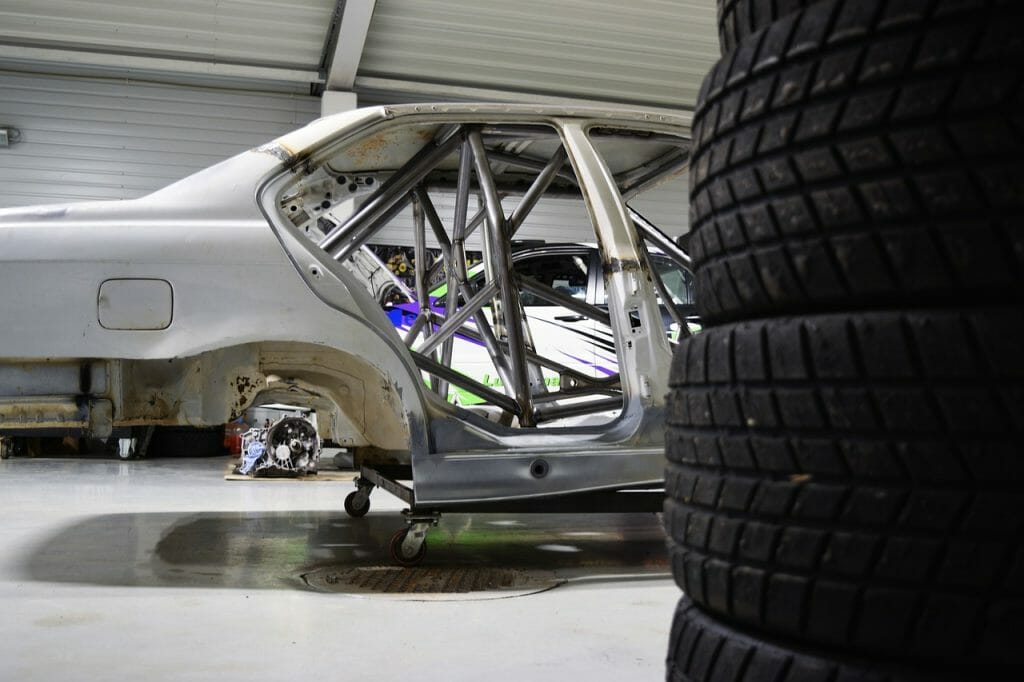
"Not all floor paints are created equal, and the testing environment of a garage floor sorts out the best from the rest!"
Garage Floor Paint - A Buyers Guide
As a general rule, products with a higher epoxy count (often sold in two packs) fare significantly better than single pack mixes, and provide a tougher and longer lasting finish for garage floor paint projects. On the other hand, quality always comes at a premium so there are some questions you may wish to ask yourself before you decide which garage floor paint to use for your project. Things to take into account before you start…1: How large a floor area do you want to paint?
Each of our products indicate the expected coverage they provide. If you are in doubt about the size of your garage, the first step is to measure it so you know how many square metres you will need to paint. It stands to reason that if you are planning on applying more than one coat, you will need to double this number!
2: Be mindful of ‘hot tyre pickup’
In hot weather, or with high performance cars, tyres can get very hot. With inferior garage floor paint, the heat of the tyres against the garage floor can cause the paint to lose its adhesive properties and begin to lift. When the paint lifts it can transfer the tyres and this can then cause patches on the floor where the paint picks up.
3: Aesthetic appearance
While some people don’t seem care about their garages and use them as a room to dump things, most people care about their garage appearance. One reason might be that money spent wisely on your home can add value to it if you wished to sell. A poor quality garage with a shoddy floor can really let down the feeling of quality in a home. If you want to get a great garage floor, two-pack epoxy garage floor paint is the way to go! Our garage floor paints are available in a great range of colours including the ever popular grey floor paint right through to more unusual colours like bright orange or post office red! Additional style can be added to a garage floor by adding decorative shards on top of a painted floor and applied on top of a clear finishing coat.
In addition, aesthetic appearance in car showrooms is extremely important. When someone is spending a significant amount on money on a car, the appearance of quality in the retail venue is very important. For the most hard wearing and smooth appearance possible, choose Two Pack High Build Epoxy Garage Floor Paint.
4: Garage Floor Mechanical Toughness
We produce paint in a varying degree of toughness against wear and tear. Not all garages face the same conditions and a garage that is used to store a car that is used occasionally for gentle local runs will obviously face less wear than one that is used as a storeroom, workshop and has cars entering and leaving each day and returning with very warm tyres. For lighter use, our quick dry garage floor paint is a suitable product, but for a garage floor that will stand the test of time in tougher conditions, our two-pack epoxy floor paint offers superior protection!
5: Garage Floor Chemical Resistance
Aside from the more obvious potential sources of damage to a garage floor, leaking oil, petrol or diesel, various cleaning products, screen wash or solvents can also cause stains and deterioration. Epoxy garage floor paint is the best product for resisting chemical damage.
So which Garage Floor Paint is Right for Me?
Garage Floor Paint and the choice of the right product for our needs requires some careful thought as to what we want from our garage floor after we completed the job. Have we really tackled the key reasons why we decided to paint the garage floor? The reasons we paint our garage floor and the type of Garage Floor Paint to achieve this is a critical first step. Reasons can be as simple or mundane as suppressing the dust, covering up a lifetime of marks and old oil stains through more practical reasons including needing a higher degree of anti-slip, or marking out the bay where the car goes so your partner leaves enough room for you to get out without limbo dancing to a specific requirement like reducing water seepage into garage pit or helping to level up a degraded floor.Water Based or Solvent Based?
Garage Floor Paint comes in a range of options but generally due to the presence of old oil residues and other contaminants accumulated it is better to choose a solvent based or solvent free option since most water based products tend to give poor adhesion to oil or dirt and this can lead to premature failure. This is also important to bear in mind when considering how much time you have before you can put it back into use as in the UK’s cold and wet climate many water based products have to contain a solvent to help the paint to come together in a film - especially at our normal temperatures as their “minimum film forming temperature” for the more durable resins can be as high as 28 – 35 degrees without such a solvent. For this reason there are currently a range of options and drying speeds available for this type of application without having to resort to water which is normally a very poor solvent and requires lots of surfactants to overcome this problem.Paints for a Purpose
If we consider the general purpose or light duty traffic Garage Floor Paint used by modern paint producers these are usually formulated as a single pack product based to a large extent on a modified alkyd resin. These are particularly popular for Garage Floor Paints as they are easy to mix and apply, they can be applied with a brush or roller or even for the more adventurous by spray application and they have relatively few overcoating or repainting issues making them ideal for consumer use. They are usually available as a quick drying or standard type depending on the time available to first use although it is always good practice where possible to allow a newly painted garage floor to dry through thoroughly for a few days before driving on it (as the twisting action when turning the steering wheel of the car can on the points of contact with the tyres act like a suction cup and pull away small patches of paint where the tread has been in contact with the paint) This type of problem is often caused by solvent being trapped under the dry surface of the garage floor paint and this can take little longer to disappear even from an apparently dry hard surface, especially on areas where the coating is a little thicker than the rest of the garage floor, for example where something has been dropped and left a small indentation in the concrete.Heavy Duty Paints
Whilst these single pack “Modified Alkyd” Garage Floor Paints are good general purpose products – some people want something for more heavy duty use or with a longer maintenance cycle and for this application type there is nothing which can beat an Epoxy Floor Paint. This is such a versatile product for flooring but is more difficult to use than an Alkyd Garage Floor Paint. It’s chief advantages are longer life, improved chemical resistance and wear resistance. The penalty to pay for this is that epoxy Garage Floor Paints are more expensive, they are usually 2 or sometimes 3 components which must be mixed thoroughly before use and cannot be used outside their pot life which generally means you have to finish the job in a few hours, you can’t as with an alkyd, simply reseal the tin and finish it the next day. Overcoating is more difficult as due to its hardwearing nature sanding previous coats can be hard work!.Conclusion
To summarise, for the best results, especially for those not familiar with painting floors, a modified alkyd Garage Floor Paint gives good results and is more forgiving. However, for longer lasting or more demanding applications a solvent (or solvent free) Epoxy Floor Paint is worth the extra effort and it is always better to use a more tolerant product if you can afford it. These tend to be much easier for the novice whilst giving a very professional finish. So, if you are only painting your garage floor to hide those old oil stains, to suppress dust or for a cosmetic “clean” finish a single pack Garage Floor Paint will be a good choice. However, if you are planning on longer life between repaints or using the garage with heavier traffic it may be worth considering a two component Epoxy Paint. Whatever your choice and whether applying by brush, roller or spray always follow the manufacturers application instructions.Regal Paint® - Floor Paint Manufacturers
Regal Paint® manufactures hard wearing, long lasting, high-performance floor paint for a complete range of applications, both industrial and commercial. Our floor paints are ideally suited for application on warehouse floors, factory floors, commercial garages, MOT centres, showrooms, chemical plants, galleries and much more. Regal Paints are specialist manufacturers of epoxy floor paint, concrete floor paint, quick-drying paint, garage floor paint and more. Please contact us to discuss your requirements or consult our floor coatings FAQ section for more information..